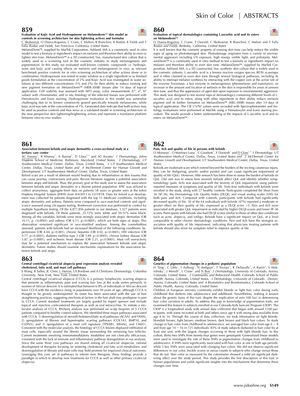Central Centrifugal Cicatricial Alopecia Gene Expression Analysis Revealed Cholesterol, Fatty Acid, and Mast Cell Pathways
Central centrifugal cicatricial alopecia CCCA scarring hair loss RNAseq analysis steroid pathways cholesterol pathways fatty acid pathways fibrosis pathways hypertrophic scarring pathways mast cell signature mast cell infiltration fibrotic tissue cholesterol metabolism fatty acid metabolism cicatricial alopecias

TLDR Targeting cholesterol, fatty acids, fibrosis, and mast cells may help treat CCCA.
Central centrifugal cicatricial alopecia (CCCA) is a scarring hair loss condition primarily affecting women of African descent, with an estimated prevalence of 6-8%. RNAseq analysis of scalp biopsies from 5 CCCA patients revealed three key pathways: downregulation of steroid/cholesterol/fatty acid pathways, upregulation of fibrosis and hypertrophic scarring pathways, and upregulation of a mast cell signature. Histological analysis confirmed mast cell infiltration around fibrotic tissue. Current treatments are not effective, aligning with the lack of immune pathway dysregulation. The study suggested that therapies targeting cholesterol and fatty acid metabolism, fibrosis, and mast cells could improve clinical outcomes for CCCA and other cicatricial alopecias.




